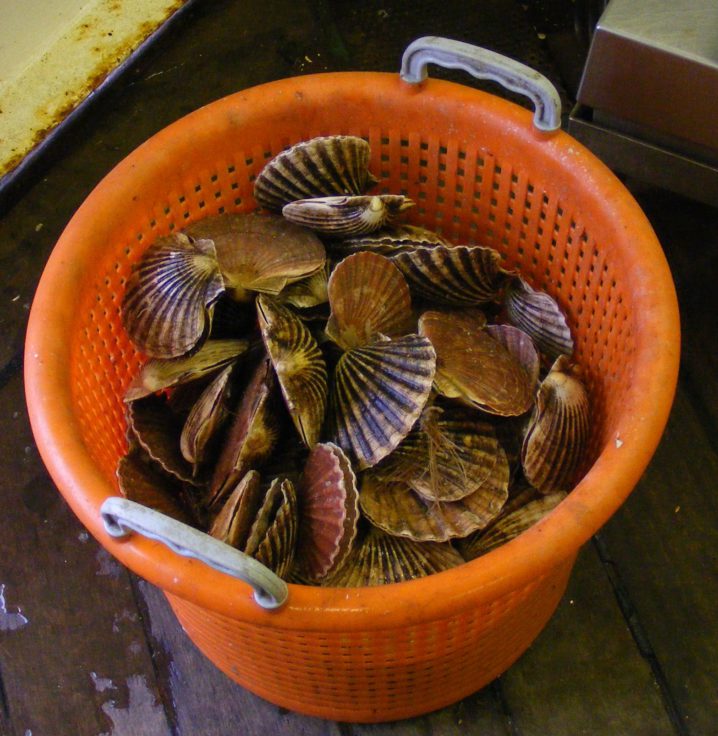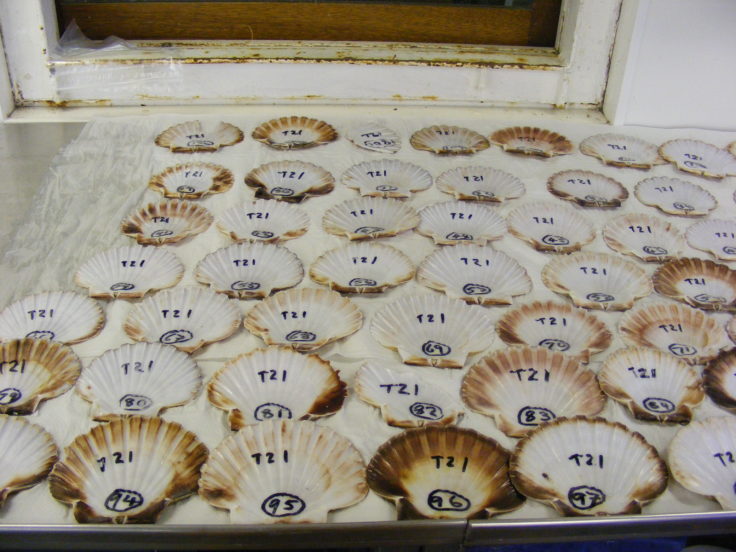New study on how shellfish create their shells
A new study describing how shellfish create their shells in response to their environment is published today (Wednesday 8 February) in the journal Royal Society Open Science.
The shells of the great scallop (Pecten maximus) are variable in shape and colour, so researchers wanted to understand what determines these differences. A team of European researchers working on the British Antarctic Survey led project CACHE, working with the AFBI (Agri-Food and Biosciences Institute) used a range of new cutting-edge methods to investigate the genetics of great scallops sampled along the coast of Northern Ireland. By comparing the scallops’ genetics with the shape and the size of the shell, they found the animals were very flexible in how much shell they could produce in differing environments. They conclude that genetics is unlikely to determine the variability in shell morphology.

Lead author David Vendrami from the University of Bielefeld and a researcher within the CACHE (Calcium in a changing environment) project says:
“Scallops are an important global food source with over 75,000 tonnes produced annually. Our environment is rapidly changing and the joint efforts of researchers and stakeholders are needed to understand how animals may cope with changing conditions. The fact that scallops produce their shell differently when facing diverse environmental conditions is an important outcome that needs to be considered in the effort of providing resilient stocks for future aquaculture and planning the locations of future shellfish farms.”

Second author Luca Telesca from University of Cambridge on the CACHE project adds:
“This work shows us how the use of modern methods can allow us describe natural systems in much finer detail than ever before. This is just an example that gives us a glimpse of their invaluable potential for obtaining a better understanding of how animals adapt and respond to their natural environment.”
The paper “RAD sequencing resolves fine-scale population structure in a benthic invertebrate: implications for understanding phenotypic plasticity” by David L. J. Vendrami, Luca Telesca, Hannah Weigand, Martina Weiss, Katie Fawcett, Katrin Lehman, Melody S. Clark, Florian Leese, Carrie McMinn, Heather Moore and Joseph I. Hoffman is published today (8 February 2017) in the journal Royal Society Open Science here
This study involved researchers from the EU funded CACHE project affiliated with the University of Bielefeld, University of Cambridge and British Antarctic Survey (BAS) in Germany and the UK respectively, together with colleagues from University of Duisburg-Essen in Germany and Belfast Agri-Food and Biosciences Institute (AFBI) in the UK. The CACHE network is funded by the European Union under the Marie Curie initial training network programme (grant ref: 605051) www.cache-itn.eu